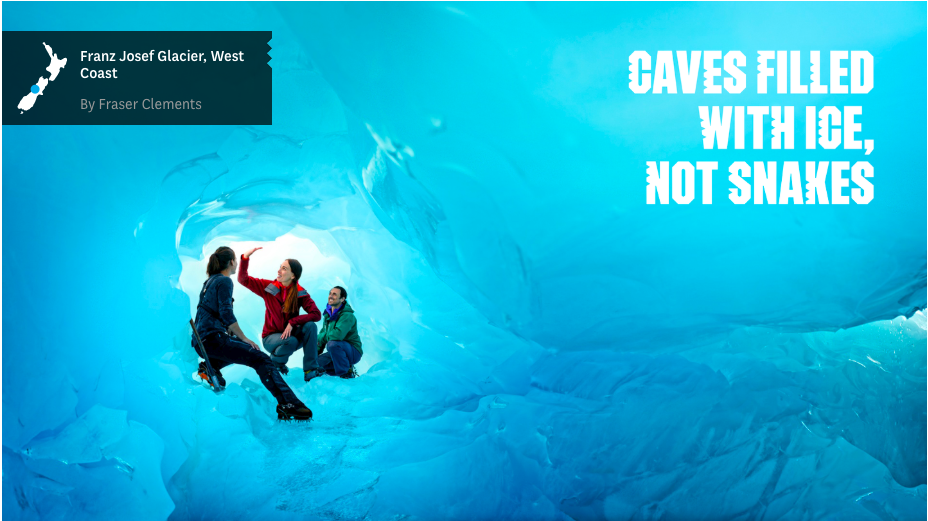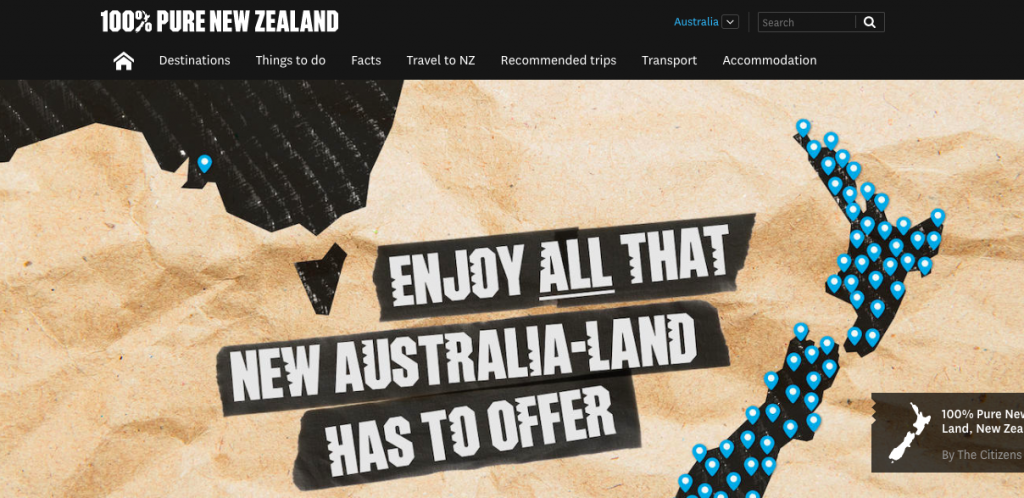In this cross-posting from the AW360 website Alex Hayes looks at the case for sticking with a solid brand platform.
This year Tourism New Zealand will celebrate a rare feat. It’s not its billionth visitor, the opening of a new attraction etc, but something rarer for a marketing organisation – the 20th anniversary of its brand platform.
100% Pure is something of an icon in the travel marketing world. A simple statement which encapsulates the spirit of the Land of the Long Cloud, and is envied by almost every other tourism body the world over.
According to the Tourism New Zealand’s website: “100% Pure New Zealand tells the story of how this country’s unique combination of landscapes, people and activities cannot be found anywhere else in the world – it is a ‘100% Pure New Zealand’ visitor experience.”
Long-running brand platforms are something of a rarity these days, rather than the norm. We all know the refrain, the regular turnover of marketing bosses at companies and the need for successors to stamp a new mark, and often new agency, on that company, means consistency and longevity are in short supply.
But that long-term platform has proven to be a massive blessing for Tourism New Zealand, allowing them to become something rare in the world of government bodies – agile and fun.
That was put to the test in January this year, when Kiwis awoke to an unusual marketing campaign from Meat and Livestock Australia (MLA) – a rallying call to unify the two nations under the name ‘New Australia-Land’.
For those not in the know the MLA releases a big ad each year around the Australia Day public holiday, with a tradition in recent years of taking on awkward and taboo topics, all in the name of selling Aussie lamb.
This year’s campaign, created by creative agency The Monkeys and based on another established brand platform of ‘You Never Lamb Alone’, poked a bit of fun at their trans-Tasman rivals, whilst also acknowledging New Zealand is getting a lot right at the moment.
As Mark Green, CEO of The Monkeys, explains on the Face 2 Face podcast about the ad: “It’s a national event that is almost its own Super Bowl where you’re waiting for the next one to happen. The creative team in this instance saw the rivalry between Australia and New Zealand as the opportunity.”
So the ad lands, and the Australian team at Tourism New Zealand see an opportunity to jack into the news agenda and create a reactive piece of communications to capitalise on this blockbuster moment. And this is where the established brand platform comes into its own.
A few hours of back and forth with agency TBWA Sydney soon unearthed a strange fact, MLA hadn’t registered the domain NewAustraliaLand.com.au. And from there the idea of a simple, but incredibly effective, response campaign took shape.
Tourism New Zealand’s general manager for Australia Andrew Waddel explains: “One of the reasons we thought there was something in it was because the creative concept of the ad was bringing people together around the lamb. So unity, inviting the country in.
“So we thought well what if we embrace that and say we love your idea, we love New Australia-Land and the idea that we went with was the domain which we found hadn’t been registered.”
It’s an idea born in a few hours, and it’s really quite simple, a tourism website for New Australia-Land. Waddel adds: “Our point of difference is that the best of New Australia-Land just happened to be in New Zealand. Apart from one one point in South Australia, which is a fish and chip shop we really like.”
From a craft point of view the website is a testament to great copywriting, sharp one liners taking a good-natured swipe at Australia (or the ‘other island’ as it is dismissively called) whilst selling the virtues of New Zealand.
For example: “In the Southern Alps, you’ll discover some of the world’s most majestic ice formations hiding amongst 3000 ancient glaciers. Unlike the desert caves to the west, where you could discover 10 of the world’s most deadly snakes hiding under a rock next to your ankle.”
What makes it work so well is it is Aussie creatives having a field-day taking the rise out of their own country – something which allowed them to be a little more direct than others may have dared to be.
Timeliness was also a massive factor for the campaign, and the website was launched on Thursday, just over 72 hours after the lamb ad started airing. That allowed it to steal into the news headlines generated by the interest in MLA’s effort, and generate massive pick up on social. It also kept the MLA’s efforts in the news as well – a win-win situation.
This wasn’t a tactical campaign, but a clever and nimble brand push, emphasising some of the best parts of the New Zealand brand asset.
But as Waddel explains this wouldn’t have been possible if they didn’t have an effective and well-established brand framework to work from.
“If you look at 100% Pure New Zealand the campaign’s been going 20 years and we’ve had lots of times where we’ve moved and evolved,” he says. “And those moments build up to the next time to allow you to go, remember when we did this? Here’s another one. It’s in the cultural zeitgeist. It’s relevant. It’s timely.”
If they hadn’t had that framework and institutional marketing muscle memory, understanding and well-established tone of voice there is no way Tourism New Zealand could have reacted so rapidly, and the opportunity would have been lost.
This went beyond a couple of well-crafted tweets and created another platform and excuse for the brand to hack into the headlines.
For a relatively small spend on social media New Zealand managed to generate coverage around the world and drive hundreds of thousands of visitors to its website.
Other brands got in on the act, with national airlines Qantas and Air New Zealand exchanging online banter (something the two have a history of).
The power of brand is increasingly talked about in the marketing world today, and this example highlights how effective it can be, and how essential it is in a world of increasingly tight turnaround times to have those established brand codes which give you a licence to play in unexpected places, and different ways.
You can hear the full chat between Mark Green and Andrew Waddel, on the Face 2 Face podcast.




